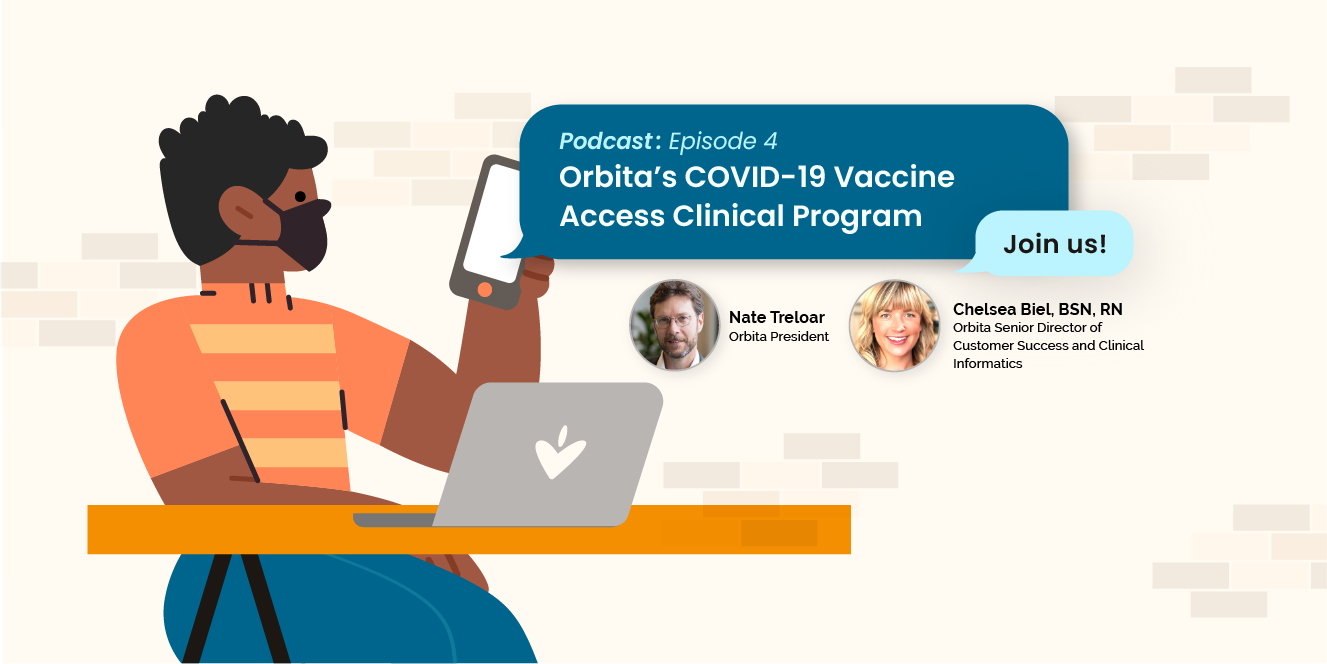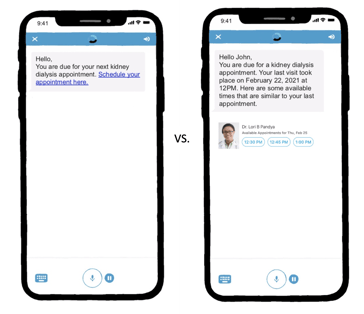
Crafting Effective Proactive Outreach Campaigns to Minimize Care Gaps
"By cascading the communication outreach, you're creating different ways of connecting with patients. It's almost like you're knocking on the front door, you're ringing the doorbell, and you're going around and knocking on the back door as well.” -Orbita Co-Founder and President Nate Treloar in Episode 4 of Conversations with Orbita
 Healthcare is at the forefront of digital transformation with electronic health records, telemedicine, patient portals, and wearable devices. This digitalization has only accelerated throughout the COVID-19 pandemic with SMS, email, phone calls, and Zoom maintaining a level of information exchange that would not have been possible otherwise.
Healthcare is at the forefront of digital transformation with electronic health records, telemedicine, patient portals, and wearable devices. This digitalization has only accelerated throughout the COVID-19 pandemic with SMS, email, phone calls, and Zoom maintaining a level of information exchange that would not have been possible otherwise.
While these digital tools have enabled healthcare organizations to reach patients at scale, the challenge is still how to successfully engage each patient once that notification appears in their hands. Some typical barriers to engagement include the channel of outreach, the content of the message, or the timing of the campaign’s deployment.
Orbita assists healthcare organizations in crafting proactive, conversational campaigns to reduce care gaps and effectively engage patients.
Cascaded Communication
"An organization is timing that communication - cascading that out to their various patients - ensuring that they're reaching them where those patients and family members may be on the digital literacy scale." -Orbita Senior Director of Customer Success and Clinical Informatics Chelsea Biel, BSN, RN in Episode 4 of Conversations with Orbita
 The first step is identifying the most appropriate channels of communication for the target audience, and then contacting them through those different channels – one after the other – until they are successfully engaged. No patient base is homogenous, so not everyone will have access to the same type of technology or have the same preference in how they communicate digitally.
The first step is identifying the most appropriate channels of communication for the target audience, and then contacting them through those different channels – one after the other – until they are successfully engaged. No patient base is homogenous, so not everyone will have access to the same type of technology or have the same preference in how they communicate digitally.
Today, 15% of people in the U.S. own a cellphone that is not a smartphone and 39% of those people are aged 65+, which happens to be the demographic with the greatest healthcare needs. So, sending an SMS to this demographic of patients might not reach too many of them, but 84% of people aged 65+ have an email address. Beyond that, some patients simply prefer email over SMS while others prefer phone calls over email, etc.
Example of a Proactive Outreach Campaign:
A kidney dialysis center has taken extreme measures to maintain a healthy environment for its patients and staff throughout the COVID-19 pandemic. This center wants to encourage and support patients to continue to come in for their necessary treatment.
In the U.S., about 38% of patients aged 65+ have chronic kidney disease compared to 13% of people aged 45-46, so this healthcare organization’s target audience is most likely patients 65 years and older.
To start engaging these patients, they deploy an automated email message on a Monday morning with a call-to-action reminder to make an appointment. Those patients who were not successfully engaged will receive an SMS message on Wednesday morning, and finally for those patients still unengaged, they will receive a phone call on Friday morning. Not only is this effective, it's cost-efficient - saving the largest expense (phone calls) for the smallest percentage of patients still left to reach.
An automated, omnichannel campaign like this provides an avenue for health systems to efficiently reach patients and effectively engage them to close care gaps.
Studies also show that multi-modal reminders and automated engagement, can reduce no-show rates by as much as 80%. Offering friction-less connection opportunities for patients means they are more likely to maintain wellness as a result of regular care.
"Orbita worked with one healthcare organization to notify 100,000 patients of their test results. We had a 70% engagement rate, and of that 70%, 78% responded based on the initial text outreach. So, we had the initial 22% boost with the multichannel approach." -Biel in Episode 4 of Conversations with Orbita
Conversational AI
The next piece of the engagement puzzle is about the composition of content in these outbound messages. Leveraging nudge theory, which focuses on the design of an outgoing message to influence recipients' behavior in a predictable way, can prompt more patients to take action. These messages typically include a call-to-action, next best steps, links to acquire more information, or could lead to a chatbot on a website.
Orbita has deployed a number of different messages for healthcare organizations that prompt patients to check their test results, schedule appointments, take their medication, and more - not only delivering these resources and information patients need, but supplying the pathway to it.
The key to success here? Conversational AI.
That can take these messages beyond general reminders and suggestions; not only scaling outreach through the variety of digital channels, but scaling personalized outreach to acquire that quality engagement. 
Analytics and Insights
Ultimately, the most important piece is the data. Once a proactive outreach campaign has been completed, Orbita delivers analytics and insights for the healthcare organization to continue learning about its patient base and success of its impact.
Throughout the campaign, Orbita collects data to populate a variety of visualizations to show which channel engaged the most patients, at what time they were engaged or responded, and how many successfully completed the message’s request.
These insights help organizations adapt by recognizing the channel that has worked to engage each patient, and then remembering to use that first for future campaigns.
These elements of an engagement strategy maximize the amount of patients taking an active role in their care journey, and also alleviates the cost and time burden on healthcare organizations to deliver this type of personalized support at scale.
